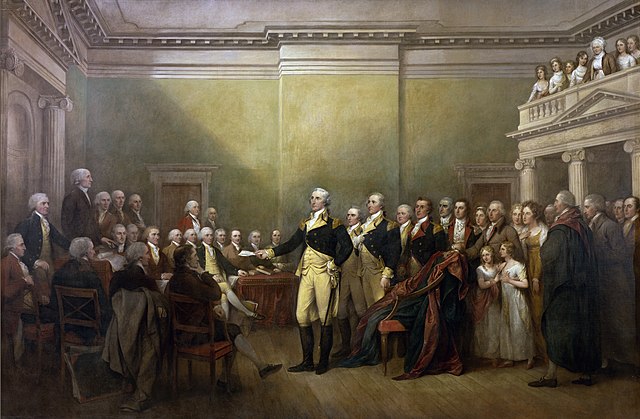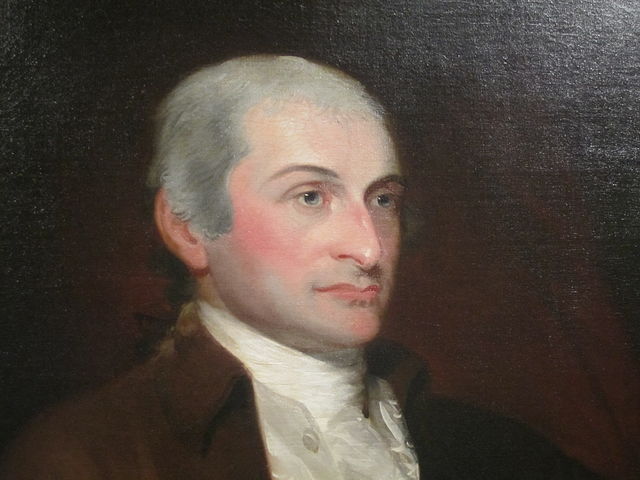Congress of the Confederation
The Congress of the Confederation, or the Confederation Congress, formally referred to as the United States in Congress Assembled, was the governing body of the United States from March 1, 1781, until March 3, 1789, during the Confederation period. A unicameral body with legislative and executive function, it was composed of delegates appointed by the legislatures of the several states. Each state delegation had one vote. The Congress was created by the Articles of Confederation and Perpetual Union upon its ratification in 1781, formally replacing the Second Continental Congress.
General George Washington Resigning His Commission, an 1824 portrait of George Washington by John Trumbull
Image: Independence Hall
Image: Independence Hall
Image: Independence Hall
The Confederation period was the era of the United States' history in the 1780s after the American Revolution and prior to the ratification of the United States Constitution. In 1781, the United States ratified the Articles of Confederation and Perpetual Union and prevailed in the Battle of Yorktown, the last major land battle between British and American Continental forces in the American Revolutionary War. American independence was confirmed with the 1783 signing of the Treaty of Paris. The fledgling United States faced several challenges, many of which stemmed from the lack of an effective central government and unified political culture. The period ended in 1789 following the ratification of the United States Constitution, which established a new, more effective, federal government.
Robert Morris served as Superintendent of Finance from 1781 to 1784
General George Washington Resigning His Commission in Annapolis, Maryland on December 23, 1783, painting by John Trumbull (1824)
George Caleb Bingham's 1851–52 Daniel Boone Escorting Settlers through the Cumberland Gap depicts the early settlement of Kentucky
John Jay served as Secretary of Foreign Affairs from 1784 to 1789





